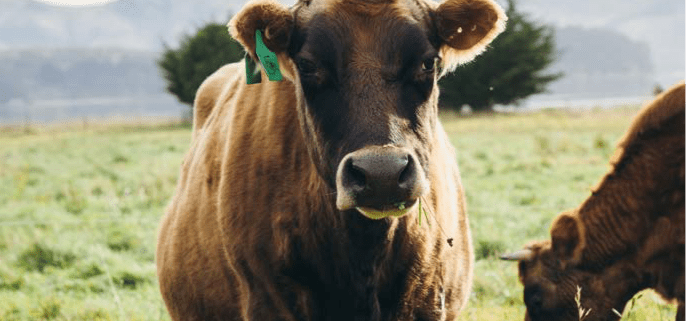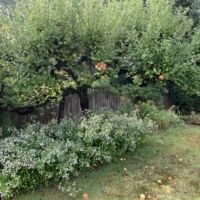How to care for Horned Cows
Harvests Article – Winter 2014
Farmers Margaret and Edwin Foord respond to the horned cattle articles that featured in our previous issue – can we move away from horned cattle by Marinus La Rooij
We have been farming horned beef cattle for about ten years, running 20 breeding cows plus replacements. We leave the horns intact on our breeding cows. If the cows are culled, they are dehorned by a vet (costs an average of $50 per horn) and then sent to slaughter. All nonreplacement stock are dehorned at a young age.

The New Zealand large-scale dairying system asks a lot of changes to be made to the innate behaviour of a cow, and horns definitely complicate that. Horned milk cows will horn other cows when they are grumpy. Although that can be minimised by prompt, considerate and assertive friendly handling, good shed design and treats such as feed during milking, there will still be the odd horning. It’s inevitable because of the close proximity required by milking shed systems. We wonder if there is a case to be made for biodynamic herds above the normal European size to be non-horned, and/or an adapted version of Demeter certification for NZ dehorned herds.
Temperament is the key factor in handling horned cattle; this is a breed disposition and a learned behaviour. Choose
a breed that is placid, and handle them calmly. Our choice is Welsh Black, but Hereford tend to be similarly placid. My
experience is that cattle with Angus or Continental breed ancestry have explosive temperaments, and that dairy
crossbreds are more excitable.
Temple Grandin’s work is very informative on breed temperament and general behaviour. Grandin focused mostly on beef cattle when she compared breed behaviour. Her books Humane Livestock Handling and Animals in Translation have useful parts regarding cattle. Another writer, Marthe Kiley-Worthington, has further explored the capacity for large animals, including cattle, to develop cooperative relationships with humans. This concept may be of interest to biodynamic farmers, and the book Exploding the Myths: Mammal Welfare, Handling and Teaching is available through contacting Marthe.
Both of these authors actively consider what animals think and feel, and Marthe especially has noticed how large mammals are observant of and receptive to human body language and voice. Voice is a key communicant to dairy cows to dissuade them from horning. We have sometimes stopped a horning here by telling the cow not to; it works because these cows know us well.
Handling in the cattle yards is the main area of concern, as the biggest danger to avoid is being trampled accidentally by a cow that is dodging the horns of another. The yards need to be larger with more pens, so cows are not so tightly penned. Circular pens are best to avoid ‘corner traps’ where a cow can’t escape being horned by another. Horning in the race is avoided by putting dominant cows up the race first, or putting a board or two between cattle to stop one horning the next in front. When putting a cow in the headbail in the race, the horns are helpful – the cow slows down to fit her horns through, making it easier to lock her head in.
Trucking cattle usually means packing them tightly into the truck pens, so tightly that they cannot horn one another. If they are to be loosely penned in the truck, choose cows that get along; this requires knowing your cattle. Their personalities are distinct, and you will soon know which ones are friends or not!
Break feeding is another area where horns have an influence. Breaks need to be bigger so non-dominant cows get a share; competition for food increases horning behaviour. Fights are seldom of duration with horned cattle; the stoush is usually quickly over, and more time is spent in running/avoiding conflict. Fights between dehorned cattle tend to last longer. Either way, give them plenty of room and get out of the way! Weight, strength and attitude give dominance; horns may help but they are not determinant.
We have not seen any of our cattle bleeding from horning. The thicker hide of the Welsh Blacks may prevent this; there have been swellings under the skin after a serious horning, but not bloody wounds. Our cows have decent horns. They are a good size for filling with cow manure and turning into 500; not thickwalled and long like Highland, nor short and stubby like Jerseys.
Our cows are beautiful, and the horns give them an added grace and awareness. Standing in the field with the cows, of a quiet evening in their companionship, can bring about the strongest feeling of contentment that we have experienced anywhere, a feeling of wellbeing that somehow flows from cow and cosmos to us.


